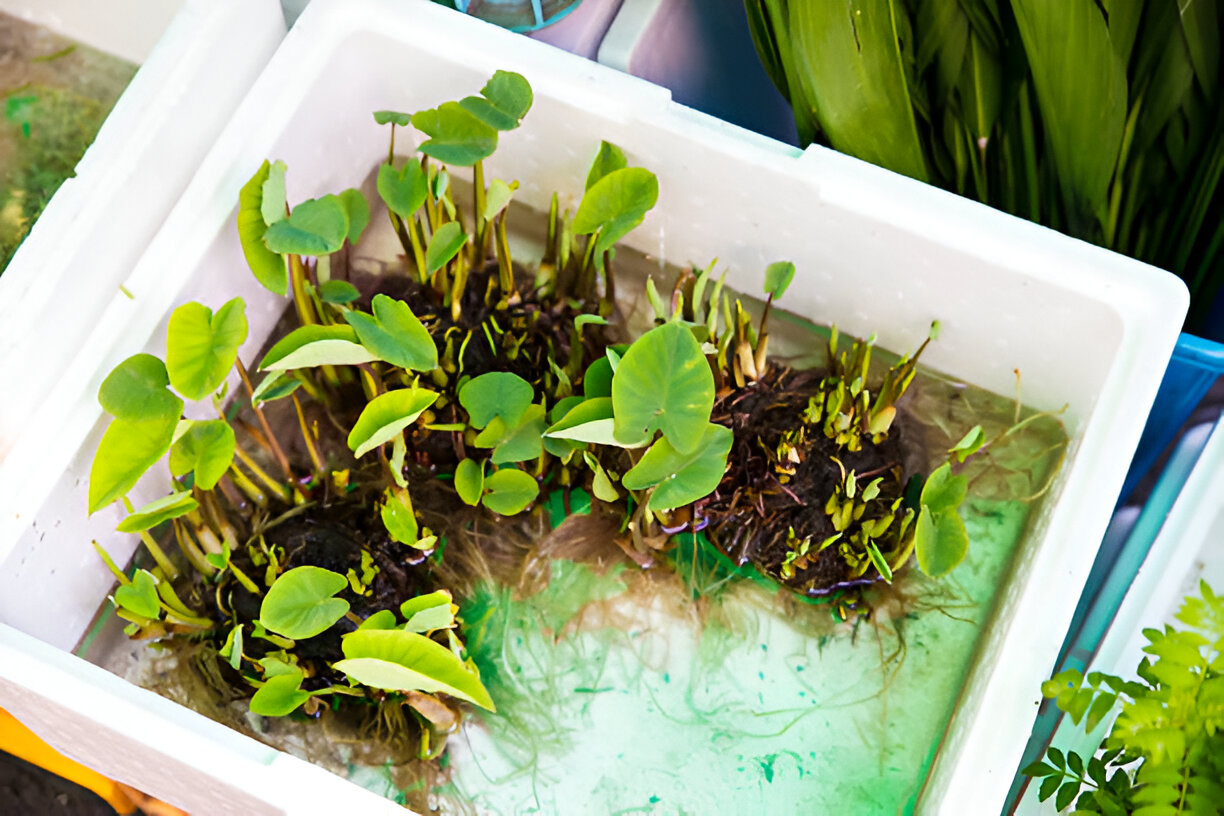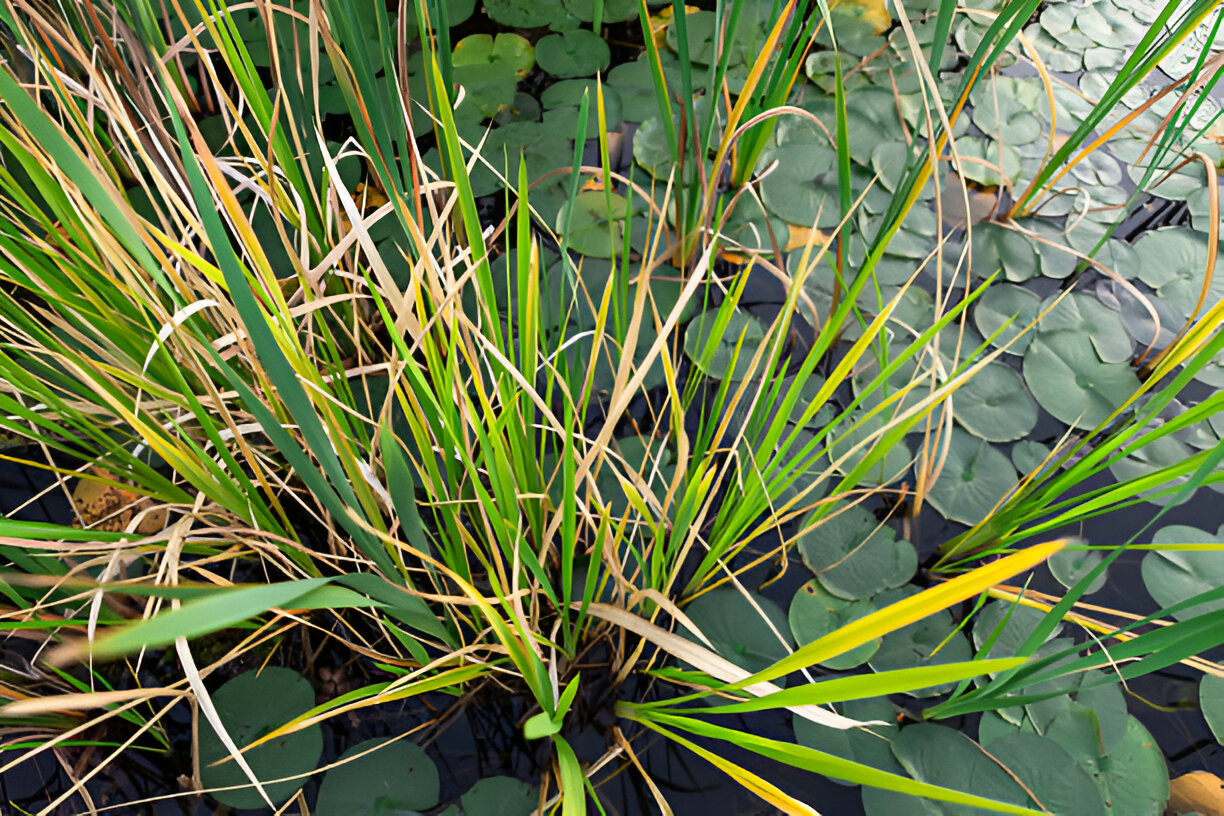Create an edible oasis by blending beauty with functionality in your pond. The right aquatic plants purify water while providing fresh ingredients for your kitchen.
“They perform double duty,” says That Pond Guy, who has helped many designs productive edible ponds. For optimal water quality to support both plants and fish, pair these natural purifiers with reliable equipment like Oase Pond filters.
Top 5 Edible Pond Plants
1. Watercress: The Nutrient Powerhouse
- Flavour profile: Peppery kick similar to arugula
- Edible parts: Leaves, stems, and flowers (roots excluded)
- Bonus benefit: Natural water filter with dense root systems
- Growing tip: Contain in submerged pots to control rapid spread.
2. Water Lilies: The Surprising Staple
- Harvest timeline: Roots become edible after 3-4 years growth
- Preparation: Soak tubers to remove bitterness before roasting
- Design perk: Provides essential shade for fish habitats.
3. Pickerelweed: The Versatile Perennial
- Edible components: Young leaves (like spinach) + nutty seeds
- Wildlife value: Purple flowers attract pollinators all season
- Culinary ideas: Use seed flour for gluten-free baking.
4. Sweet Flag: The Aquatic Ginger
- Unique trait: Rhizomes offer gingery zing to stir-fries
- Growth habit: Slow-spreading marginal plant ideal for edges
- Foraging note: Young shoots make bright salad additions.
5. Aquatic Mint: The Natural Repellent
- Dual purpose: Deters mosquitoes while flavouring drinks
- Harvesting: Trim stems regularly to encourage bushiness
- Summer staple: Infuse leaves in iced tea or lemonade.
Planting Zones for Edible Water Gardens
Shallow Marginals (0-15cm depth)
- Perfect for: Watercress, sweet flag
- Design tip: Create accessible “harvest shelves” with stacked stones.
Deep Marginals (15-40cm depth)
- Ideal candidates: Pickerelweed, water lilies
- Maintenance note: Use fabric pots to contain vigorous growers.
Floating Plants
- Top pick: Water lettuce (non-edible but excellent shade provider)
- Ecosystem benefit: Reduces algae by limiting sunlight penetration.
That Pond Guy’s Edible Pond Blueprint
After installing over 50 productive ponds, That Pond Guy recommends this balanced approach:
- 30% coverage with edible plants maximum
- Rotate crops seasonally like a terrestrial garden
- Always reserve open swimming areas for fish
- Combine aesthetics with functionality (e.g., lily pads over mint).
Harvesting & Food Safety Tips
When to Pick
- Morning harvests yield crispest leaves
- Pre-flowering plants offer best flavour
- Continuous picking encourages new growth.
Cleaning Practices
- Rinse in cool pond water first
- Soak in vinegar solution (1:3 ratio)
- Final rinse with filtered drinking water.
Caution: Never harvest from ponds treated with algaecides or from polluted water sources.
Seasonal Care Calendar
Spring
- Divide overgrown plants
- Begin fertilizing with aquatic-safe tablets
- Start new cuttings in shallow trays.
Summer
- Daily harvests of fast-growers like watercress
- To increase leaf production, trim blossom stalks
- Monitor for overcrowding.
Fall
- Collect seeds from pickerelweed
- Transplant tender plants to deeper water
- Preserve mint by drying or freezing.
Winter
- Protect root vegetables (lily tubers) with mulch
- Move potted edibles to deepest area
- Plan next year’s edible landscape.
Beyond the Pond: Culinary Inspirations
- Watercress pesto with walnuts and parmesan
- Candied lily roots as dessert garnish
- Pickerelweed seed crackers with herbs
- Sweet flag tea for digestive health
- Mint-infused cocktails with muddled berries.
Getting Started
Start small with 2-3 contained edible plants like watercress, observing their impact before expanding. ‘Great edible ponds grow gradually,’ says That Pond Guy. Try a watercress basket this weekend for quick harvests!






